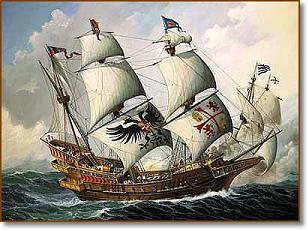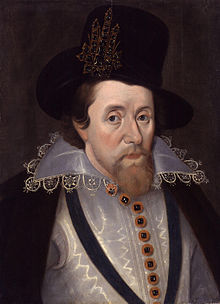By: Shannon Strack
Colonization:

Photo Credit: http://www.coinlink.com/News/category/shipwrecks-treasure/
“O brave new world, that hath such people in’t!” – Miranda
Antonio Pigafetta, a survivor of the expeditions of Ferdinand Magellan, and the chronicler of said expeditions, noted in 1520 their experiences in Patagonia. In his accounts Pigafetta describes the inhabitants they found there as being between nine and twelve feet tall. Magellan gave the inhabitants the name “patagão”, and the region “patagonia”. It is believed that the name means “land of the big feet”, however there is some controversy to that end. There are a few times in the play where Caliban mentions the demon God Setebos. “In fact, one of the better-known excerpts of Pigafetta’s narrative, that of the Patagonian giants’ God, Setebos, found its way into the play. Caliban mentions and invokes it more than once” (Robles 11). The French and Italian accounts of Magellan’s exploration, which were well known at the time Shakespeare wrote The Tempest, state that two of the mutineers that committed mutiny against Magellan were named Antonio and Sebastian.
The Last Play:
It is said The Tempest is the final play that Shakespeare ever wrote. The play was written in 1610 to 1611, not leaving Shakespeare much time to write before his death that occurred in 1616. Not only was this one of his final play to ever be written, but it was not even published until 1623, which was seven years after his death had occurred. The play was published in a book of his collected work named, The First Folio. Though this play was not published until seven years after his death, it was certainly performed on stage while he was still alive. It was not uncommon for Shakespeare’s work to go unpublished for several years after it had been written or performed. The first performance of this play took place on All Hallows’ Day (a celebration of all saints), for the court. His final play proved to be undoubting popular due to its incorporation of magic and popular songs of the era that were incorporated into its live performance.
Reign:

Photo credit: https://en.wikipedia.org/wiki/James_VI_and_I
King James was the one and only son of Mary, Queen of Scots. James ascended the throne after Queen Elizabeth died in 1603 and was an unfortunate ruler. King James commissioned the authorized King James version of the bible, which was published in 1611 and “The King’s Men” troupe of actors, of which Shakespeare was a part, performed their plays for the patron, King James. The Tempest was originally performed for James I on all Hallows Night in 1611.
Sources:
New World Encyclopedia Contribution: http://www.newworldencyclopedia.org/entry/Patagonia
Wikipedia Contrbutions: https://en.wikipedia.org/wiki/Patagonia#Early_European_exploration_and_Spanish_conquest_attempts_.281520.E2.80.931584.29
http://www.britroyals.com/kings.asp?id=james1
Conlan, Carter. “The Tempest: Shakespeare’s Final Stage Magic”. The Artifice. 2014. Web.
Frey, Charles. “The Tempest and the New World”. Shakespeare Quarterly. Folger Shakespeare Library. Vol. 30. No. 1. 1979. Web.